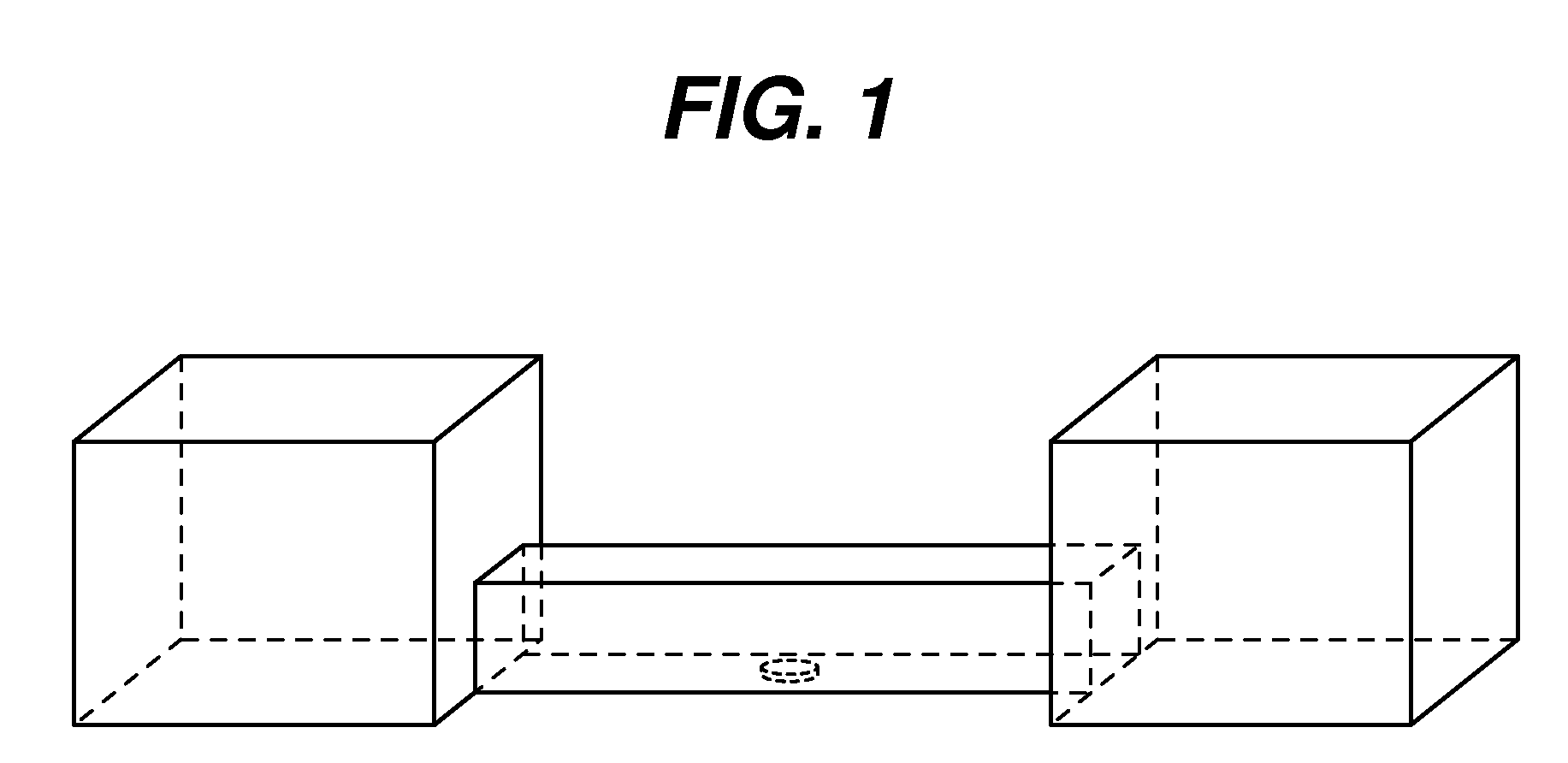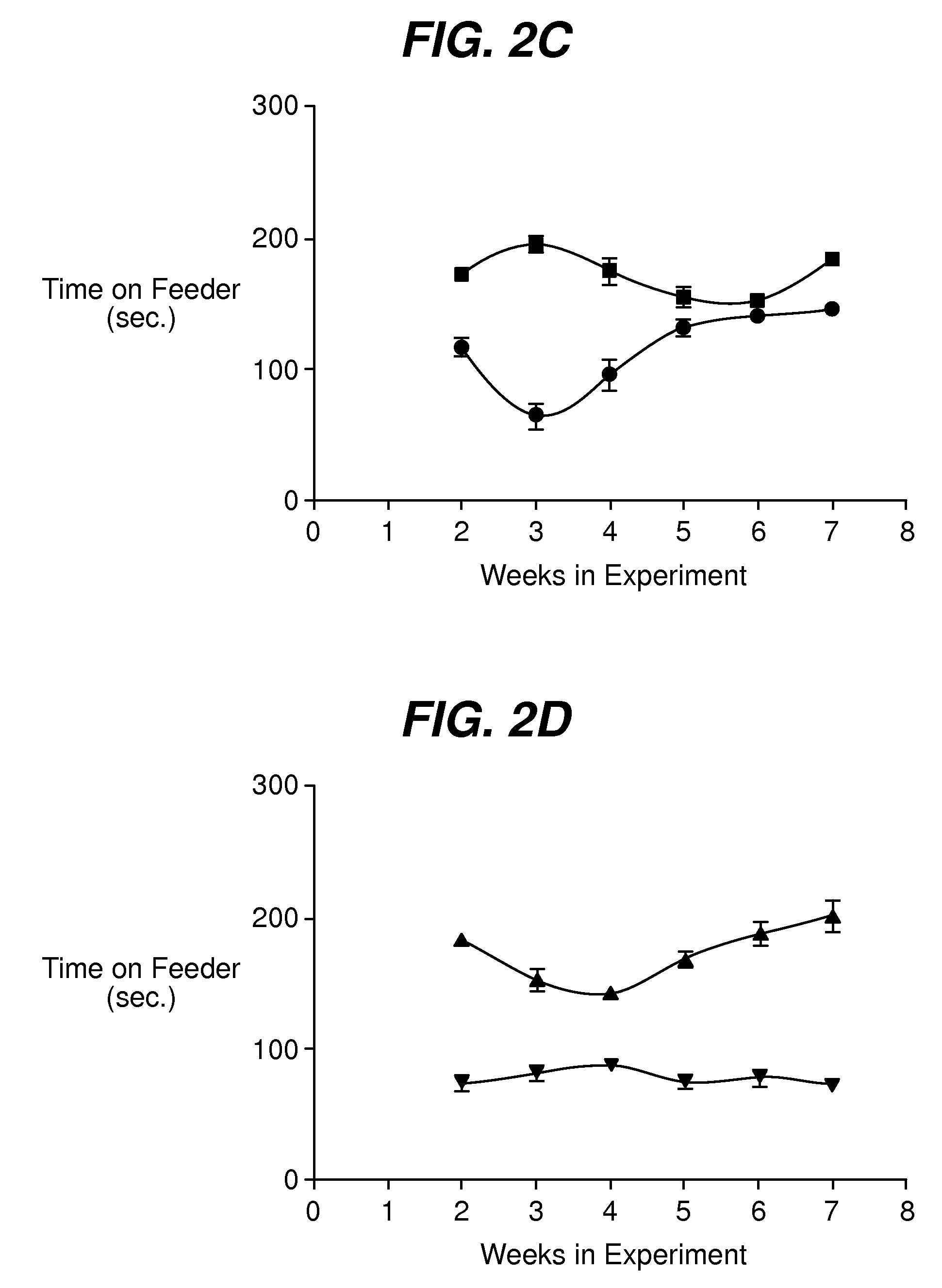Treatment of pervasive developmental disorders
a pervasive developmental disorder and treatment technology, applied in the field of treatment of pervasive developmental disorders, can solve the problems of increased social interaction challenges, slight delays in language or communication, and difficulty in verbal and non-verbal communication between autistic children and adults, so as to reduce the performance of dominant rats, and increase the competitiveness of submissive rats
- Summary
- Abstract
- Description
- Claims
- Application Information
AI Technical Summary
Benefits of technology
Problems solved by technology
Method used
Image
Examples
example 1
Dominant-Submissive Rat In Vivo Assay
Effects of COMPOUND #7 in the Dominant-Submissive Reaction, Animal Model of Mania and Depression (DD02313)
[0122]In this study, the effects of COMPOUND #7 on dominant or submissive behavior in pairs of rats competing for food are examined. It has been shown that anti-manic drugs, including anticonvulsants, decrease dominance and antidepressant drugs reduce submissiveness. This model uses dominant behavior as a model of mania and submissive behavior as a model of depression. The dominance and submissiveness is defined in a competition test and measured as the relative success of two food-restricted rats to gain access to a feeder. Rats are randomly paired and placed in an apparatus allowing them to compete for a food reward. The dominant-submissive relationship develops over a 2-week period. The submissive or dominant animals in pairs selected after 2 weeks of training were treated orally twice a week (b.i.d.) with COMPOUND #7 at 3 or 30 mg / kg for ...
example 2
Effects of Compound #7 in the Isolation Induced Aggression Model
[0164]The test compound used in this report is the same as that used in Example 1 and referred to therein as COMPOUND #7 shown as Formula #7 in the specification of this patent application. As discussed in detail below, data from the experiment showed that the test compound administered at doses of 40-mg / kg p.o. inhibited isolation-induced aggressive behavior in pairs of mice tested one hour after administration. This anti-aggressive effect of the test compound was not related to sedation.
[0165]The pharmacological effect shown by the test compound in inhibiting isolation induced aggression in this animal model suggests that this compound would have a beneficial effect on aggressiveness in humans and could improve impulse control and therefore is likely to be useful as a treatment for Pervasive Developmental Disorders (PDDs) including; Autistic Disorder, Asperger's Disorder, Childhood Disintegrative Disorder (CDD), Rett'...
PUM
| Property | Measurement | Unit |
|---|---|---|
| Disintegrative Disorder | aaaaa | aaaaa |
| Disorders | aaaaa | aaaaa |
| Diagnostic & Statistical Manual of Mental Disorders | aaaaa | aaaaa |
Abstract
Description
Claims
Application Information
 Login to View More
Login to View More - R&D
- Intellectual Property
- Life Sciences
- Materials
- Tech Scout
- Unparalleled Data Quality
- Higher Quality Content
- 60% Fewer Hallucinations
Browse by: Latest US Patents, China's latest patents, Technical Efficacy Thesaurus, Application Domain, Technology Topic, Popular Technical Reports.
© 2025 PatSnap. All rights reserved.Legal|Privacy policy|Modern Slavery Act Transparency Statement|Sitemap|About US| Contact US: help@patsnap.com



